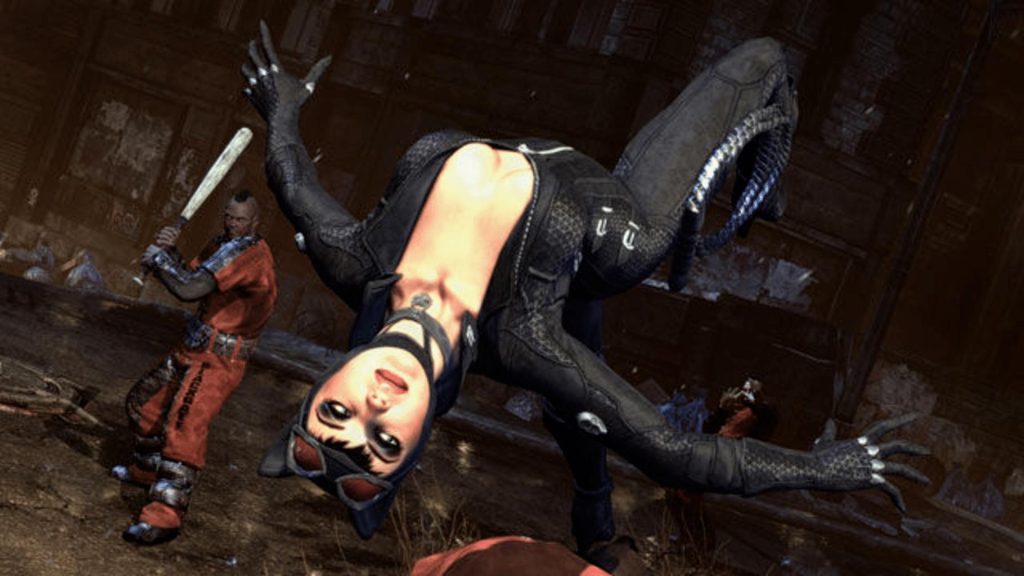Laura Mulvey, a British feminist film theorist, introduced the concept of the “male gaze” in her 1973 essay “Visual Pleasure and Narrative Cinema”. She argued that mainstream media objectifies women, portraying them as passive non-actors secondary to active male characters. This concept extends to all media portraying women and their experiences in real life.
Video games provide players with pleasure through the system and stylized behavior they enforce, reinforcing racial and gender stereotypes. The gaming industry is dominated by men, with women representing 30% and non-binary folks representing 8%. The lack of representation and support for women in gaming creates a narrow sphere of voices. Female characters are sexualized more than primary characters and appear more often in secondary roles. The damsel in distress and sex symbols are common depictions of women in video games, with the male gaze presenting them as spectacles. For example, the Batman: Arkham franchise hypersexualizes Catwoman, presenting her as a damsel in distress to be saved by Batman. Game designers hypersexualize female characters, catering to male desire and women as teh erotic object of the male gaze.
The male gaze in video games significantly influences the representation and design of female characters. Female characters hava half as much dialogue as male character, and their range of roles is narrower. This gender imbalance restricts the depth and diversity of female characters in games. Female characters are also designed wiht a smaller range of expression and have to hit harder to take down male characters. Female characters are also thinner than the average American woman and thinner in games rated for children. This discrepancy raises concerns about harmful beauty ideals and unhealthy standards of women in games. Female characters, particularly in fighting games, can perpetuate ambivalent sexism by representing bodies as objects and weapons, serving as voyeuristic pleasure mechanisms.

Video games can reinforce gender stereotypes and the male gaze through players’ choices, interactions, and preferences. The self is an aesthetic effect, and when players take on the role of a character, they extend their sense of self through the transformation of experience into agency. However, a study found that 29% of men prefer playing female characters are designed for the male gaze and can control women’s bodies. Players can actively seek out characters conforming to traditional gender norms of hyper sexualized in appearance or behavior, perpetuating the male gaze in-game and reinforcing unhealthy beauty ideals. Video games can also negatively influence players self-image and interactions, with muscular male characters and thin female characters negatively influencing body images. Video games require active participation, pushing players beyond the spectator role and driving the male gaze forward through their choices. Players not only look at women passively but also act as agents that further the male gaze through the mechanics and choices presented in the gameplay.
Bibliography
Amy Lo (June 8, 2023). Through the Looking Glass: Gendered Gazes in Video Games.



As a fan of video games myself, I really enjoyed reading this post. You clearly highlight the ways in which the male gaze affects video game creation and female character representation. You clearly demonstrate how, particularly in fighting games, women are designed to conform to negative beauty standards and often have fewer roles and dialogue. Examples of games that challenge these assumptions by developing strong, independent female characters might be good to strengthen the debate even further. Well done!
This blog post was interesting to read. Videogames is a clear example that shows the male gaze these days, especially when you said that female characters are sexualised more than primary characters, leading to secondary roles. To improve this blog, maybe talk about how the male gaze can be countered in the gaming industry. Overall, your blog post is easy to read with clear information. Keep it up!
As much as I love video games, this is a massive flaw in my favourite medium that I hate and you state everything I have a problem with it, the discrimination in a ton of them. Especially with the sexism in them, I just can not play some old games due to their dehumanizing way of showing women. But overall this article does a great job of exploring and explaining it & it’s an easy and clear read with correct information. Nice work!